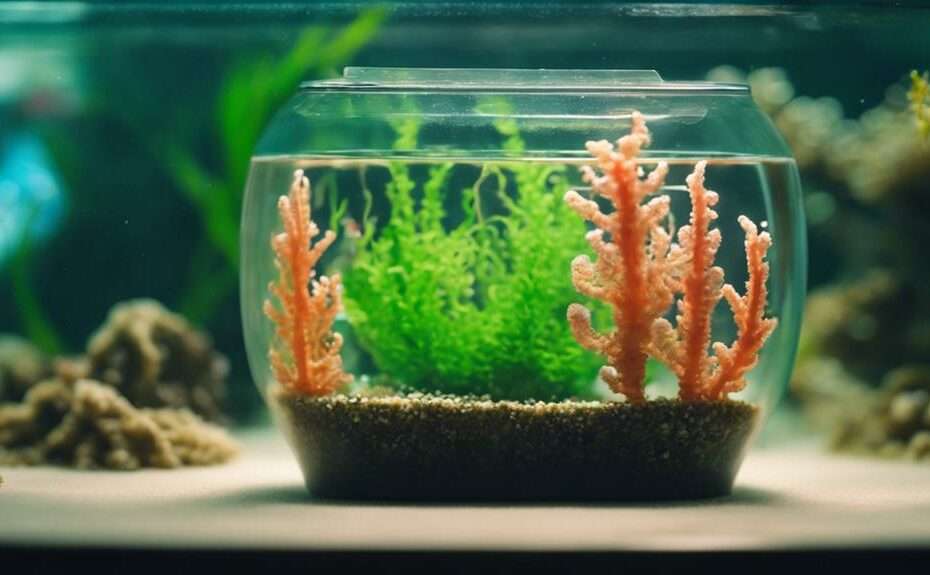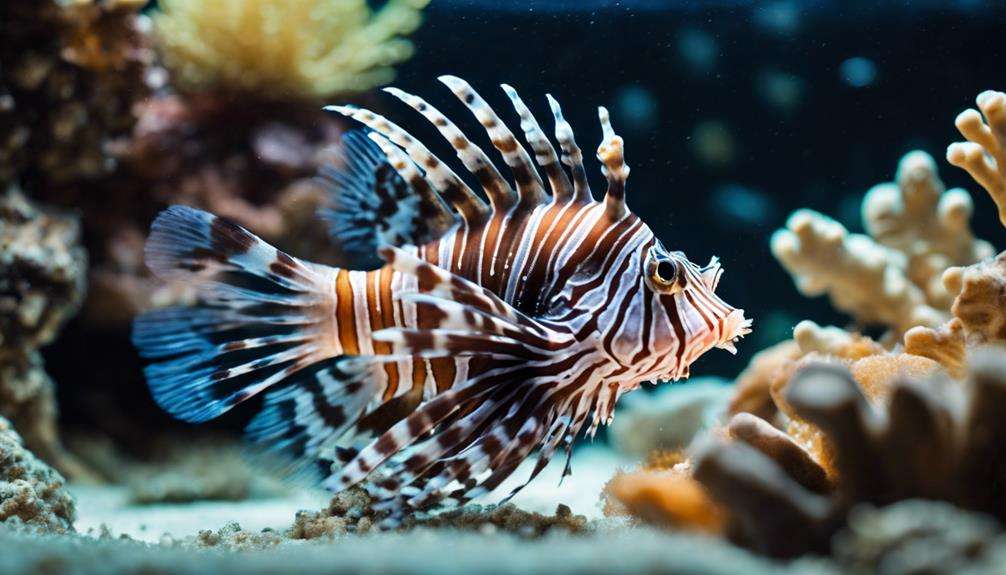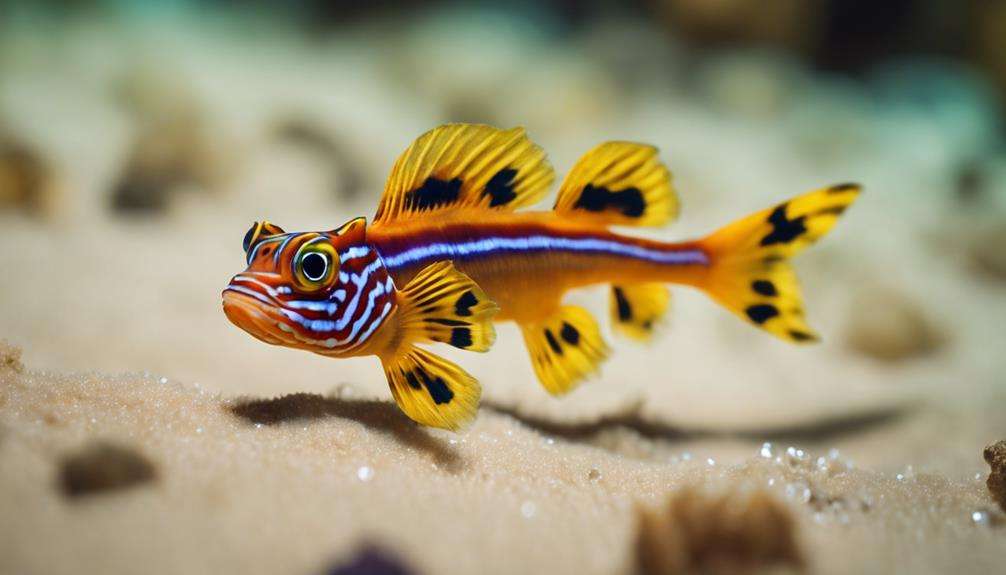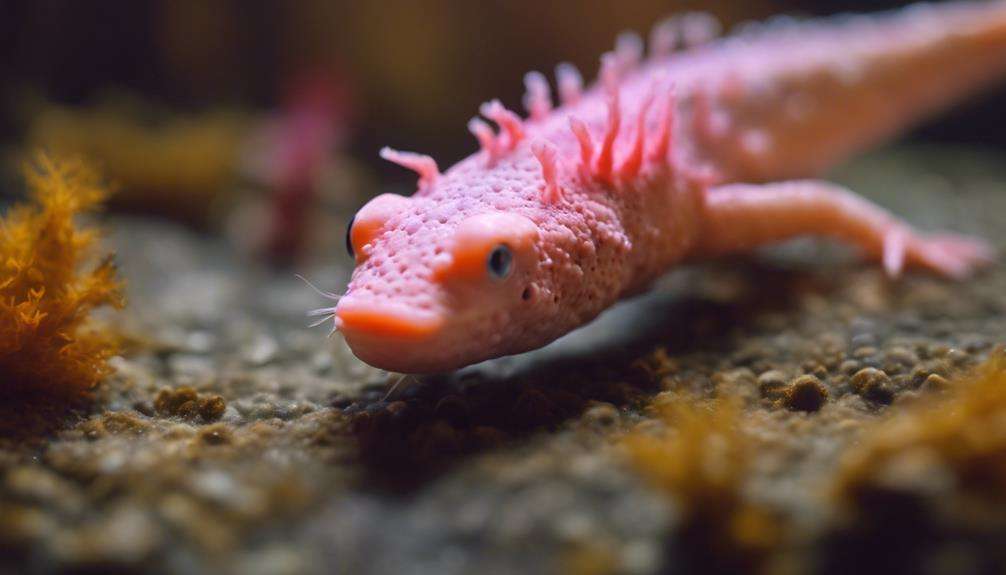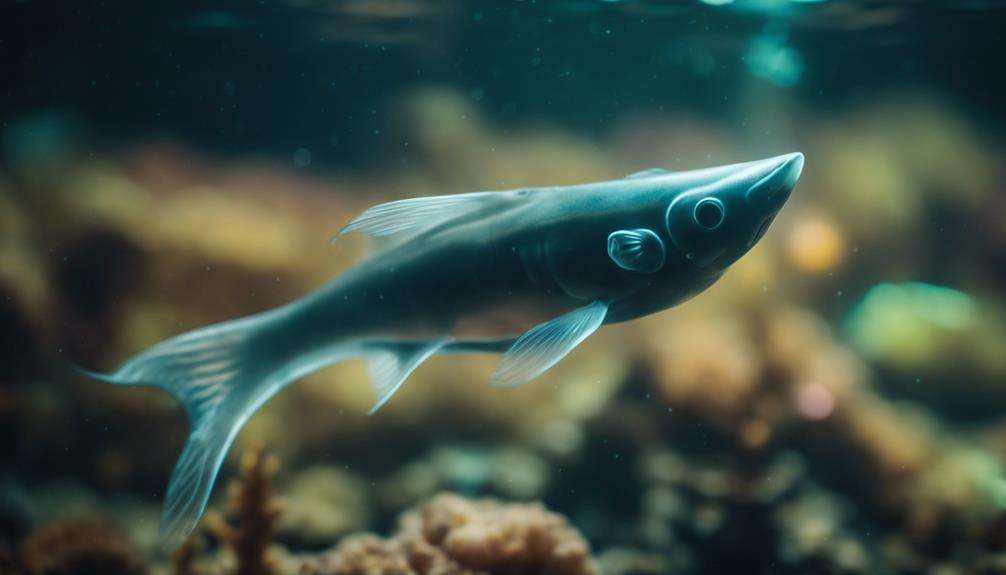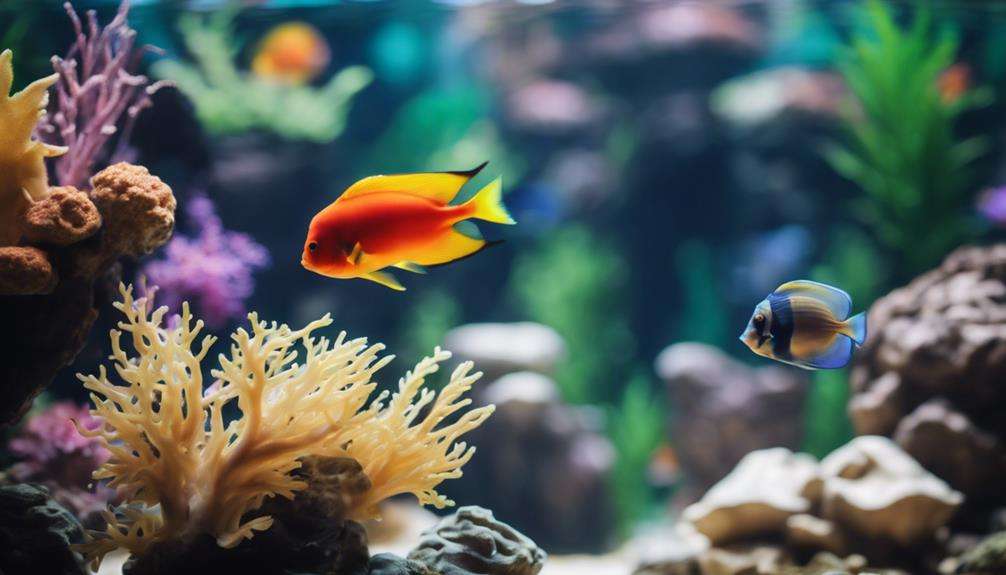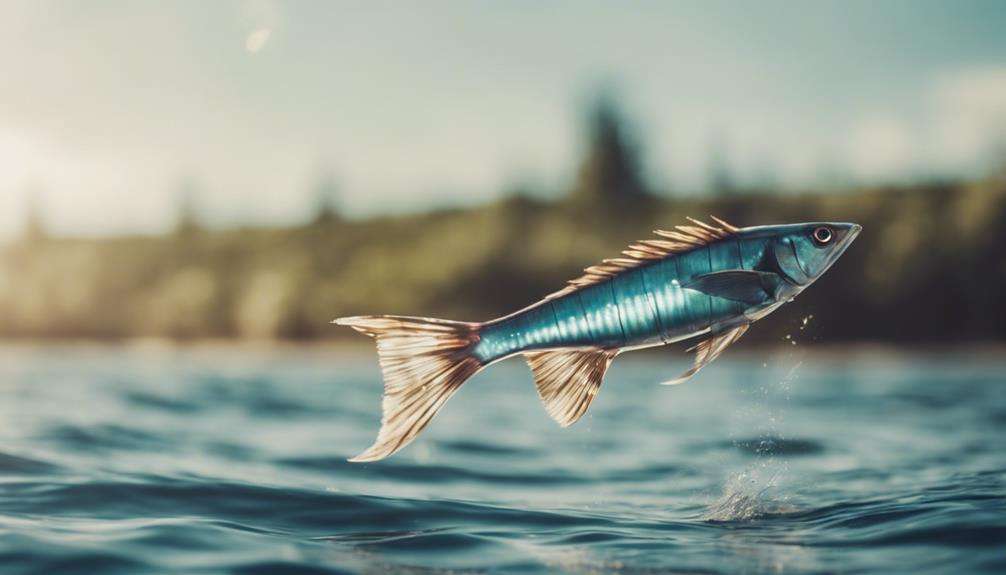When it comes to creating a suitable environment for dwarf seahorses, ensuring their habitat needs are met is key. Understanding these essential tips can make a significant difference in their well-being and overall health.
From tank size and shape to live food availability and tank mate compatibility, each factor plays a crucial role in the successful care of these delicate creatures. By implementing these strategies, you can create a thriving ecosystem that benefits both the seahorses and the overall harmony of your aquarium.
Key Takeaways
- Tank setup should mimic natural habitats for dwarf seahorses.
- Maintain optimal water quality with proper temperature, pH, and salinity levels.
- Feed dwarf seahorses live enriched baby brine shrimp frequently.
- Choose peaceful tank mates like small hermit crabs and snails for a stress-free environment.
Tank Size and Shape
When setting up a habitat for dwarf seahorses, choose a tank size between 3 to 10 gallons to ensure their well-being and consider a 5-gallon tank as the optimal size for their natural behaviors. Dwarf seahorses thrive in smaller tanks as they help concentrate live baby brine shrimp food, which is essential for their nutrition. The tank shape should be carefully selected to allow for easy cleaning and maintenance, creating a stress-free environment for the seahorses. Considering the natural habitat of dwarf seahorses is crucial when determining the tank size and shape.
In their natural habitat, dwarf seahorses are accustomed to environments where they can easily grasp onto seagrasses and corals. Therefore, a tank size of 5 gallons provides sufficient space for them to exhibit these natural behaviors while also ensuring they've enough room to move around comfortably. Additionally, a tank shape that mimics the open spaces found in their natural habitat will help reduce stress and promote overall well-being for the dwarf seahorses.
Water Quality and Temperature
Maintain the optimal health of dwarf seahorses by consistently monitoring and regulating the tank water temperature between 72-78°F. Use a reliable thermometer to ensure accuracy and make adjustments promptly if the temperature deviates from this range. Sudden temperature fluctuations can stress dwarf seahorses, making them more susceptible to diseases. To prevent such fluctuations, perform regular water changes and monitor the tank conditions closely.
In addition to temperature, water quality is crucial for the well-being of dwarf seahorses. Aim for pH levels between 8.0-8.3 and maintain salinity within the range of 1.020-1.025. These parameters mimic their natural habitat and help dwarf seahorses thrive in captivity. Regularly test the water for pH and salinity levels to ensure they remain within the recommended range. Keeping the tank water clean and stable is essential for the overall health and longevity of your dwarf seahorses.
Live Food Availability
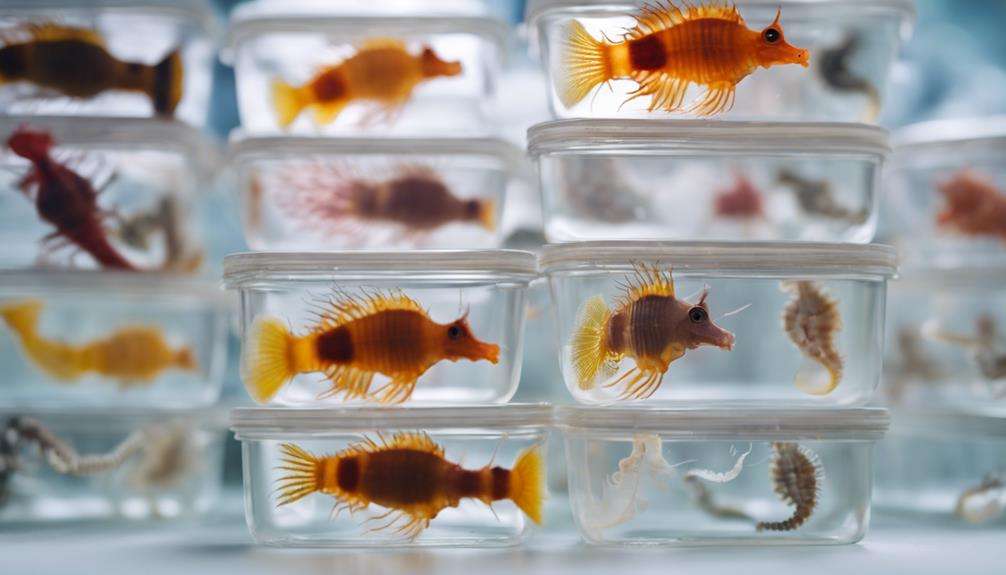
To ensure the optimal health and nutrition of dwarf seahorses in your home aquarium, it's essential to provide a consistent supply of live enriched baby brine shrimp. Live food availability is crucial for the survival and thriving of these delicate creatures due to their unique digestive system.
Here are some key points to consider:
- Nutritional Requirements: Dwarf seahorses lack a proper digestive system and rely on live food sources like enriched baby brine shrimp for essential nutrients.
- Feeding Behavior: These seahorses feed frequently by swiftly sucking up live prey through their specialized snout, emphasizing the need for a steady supply of live food.
- Health and Well-Being: Providing a constant source of live enriched baby brine shrimp ensures the overall health and well-being of dwarf seahorses in captivity.
- Survival: Live food availability plays a vital role in the survival of dwarf seahorses, as it meets their nutritional needs and supports their natural feeding habits.
Seahorse-Friendly Tank Mates
Seahorse-friendly tank mates for dwarf seahorses should be carefully selected based on their compatibility with the seahorses' peaceful nature and specific habitat requirements. Suitable companions include small hermit crabs, Hawaiian Red Shrimp, small snails, and a clean-up crew responsible for maintaining tank cleanliness.
It's crucial to choose tank mates that are peaceful and non-aggressive towards seahorses to ensure a stress-free environment within the aquarium. Compatibility with these tank mates not only fosters natural behaviors but also encourages social interactions among the inhabitants, ultimately enhancing the overall well-being and health of the dwarf seahorses.
Artificial Habitat Enhancements
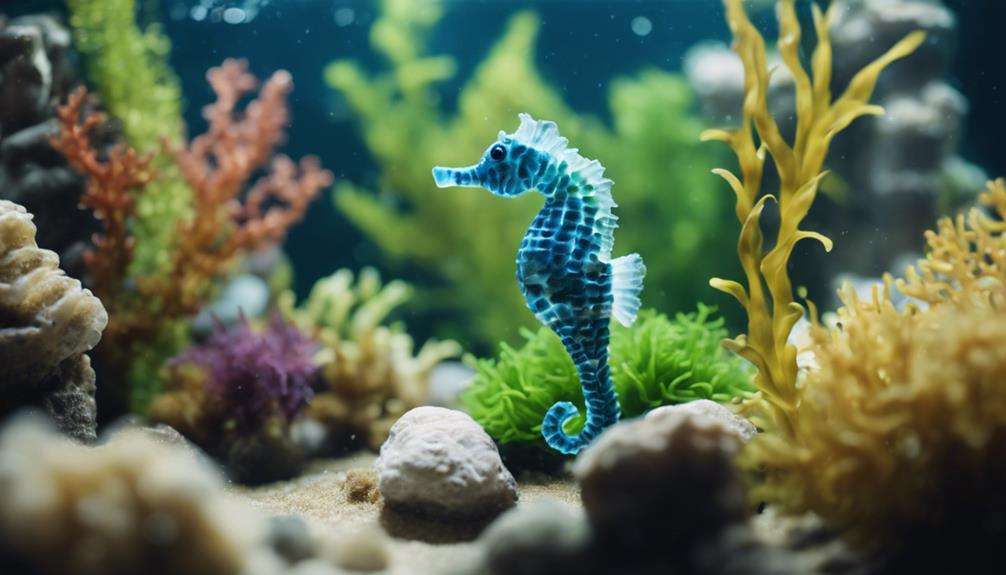
When enhancing the artificial habitat for dwarf seahorses, incorporating live macro algae and sea fans as thin hitching posts is preferred for providing a natural and aesthetically pleasing environment. These features not only offer practical benefits but also contribute to the overall well-being of your dwarf seahorses.
Here are some essential tips for artificial habitat enhancements:
- Easy-to-clean Options: Artificial coral decorations provide a convenient cleaning option for maintaining a healthy environment for your dwarf seahorses.
- Thin Hitching Posts: Live macro algae and sea fans serve as ideal hitching posts for dwarf seahorses, promoting a more natural habitat within the artificial setting.
- Aesthetic Appeal: Consider incorporating various shapes and colors of live macro algae and sea fans to enhance the visual appeal of your tank while also providing functional benefits for your seahorses.
- Hydroid Concerns: Be cautious when using live coral decorations or macroalgae, as they can introduce hydroids, which may pose a threat to the well-being of your dwarf seahorses.
Frequently Asked Questions
What Type of Habitat Requirements Does a Dwarf Seahorse Have?
To create an ideal habitat for dwarf seahorses, ensure proper water flow, live food availability, precise temperature control, suitable artificial structures for hitching, and a sand substrate. These elements are crucial for their well-being and survival.
What Do Dwarf Seahorses Need to Survive?
To survive, dwarf seahorses need suitable tank mates, hitching posts, sand substrate, proper tank size, specific water parameters, and regular changes. For feeding, seahorses display unique habits. Reproduction, predators, behaviors, and conservation efforts all impact their survival.
What Are the Habitat Requirements of a Seahorse?
To ensure the well-being of seahorses, maintain optimal water quality, regulate temperature, provide live food, choose an adequate tank size, and offer hiding spots. These elements are crucial for creating a suitable seahorse habitat.
What Do I Need for a Dwarf Seahorse Tank?
For your dwarf seahorse tank, ensure a suitable setup with 3-10 gallon capacity, ideal decorations like hitching posts, proper water quality, a precise feeding schedule, compatible tank mates, and temperature control. Follow these essential guidelines for success.
Conclusion
In conclusion, ensuring the appropriate habitat for dwarf seahorses is crucial for their well-being.
Did you know that dwarf seahorses can consume up to 3,000 brine shrimp per day?
By following the five essential tips outlined in this article, you can create a thriving environment for these fascinating creatures in your aquarium.
Remember to provide a suitable tank, maintain water quality, offer live food, consider tank mates, and enhance their habitat for a successful seahorse keeping experience.
